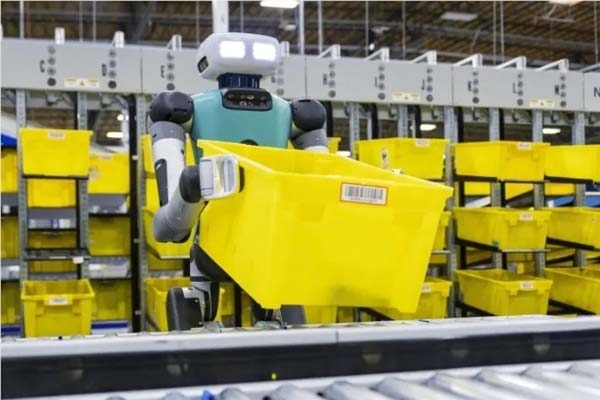Amazon will test humanoid robots to deliver packages, and logistics innovation will enter the "human-like" era

E-commerce giant Amazon (NASDAQ: AMZN) is reportedly preparing to introduce humanoid robots into its logistics system and plans to begin testing the practical application of these humanoid robots in the package delivery process in the near future. This news marks that Amazon is further exploring the cutting-edge technology path of "last-mile delivery" based on warehouse automation.
The humanoid robots deployed by Amazon this time are not the first time to enter the field of robots. For many years, the company has been using a large number of automatic handling and sorting robots in warehouses, such as Kiva systems and Proteus autonomous mobile devices, which have significantly improved the operating efficiency of distribution centers. But the introduction of "humanoid" robots means that Amazon is targeting more complex and flexible environmental challenges-especially the delicate movements such as handling, knocking, and placing that human operators need to complete in the "last mile" delivery.
According to people familiar with the matter, Amazon's robot testing project is still in its early stages and has not yet been deployed on a large scale. It is widely speculated that the humanoid robot "Digit" developed by the startup Agility Robotics may be involved in this test. Amazon has previously participated in the company's investment and expressed its expectations for its potential in distribution and warehouse scenarios. Digit's highly anthropomorphic design - including the ability to walk, stand, and lift objects - makes it a candidate for "being able to share workspaces with humans."
The introduction of humanoid robots is also in line with Amazon's consistent direction of improving automation and reducing labor costs. Especially in the context of the current global labor shortage and the continued growth of distribution demand, seeking reliable automatic distribution solutions has become the focus of logistics technology development.
However, analysts pointed out that humanoid robot technology is still in its early stages of development and faces realistic challenges such as high cost, lack of stability, and legal liability. Therefore, Amazon's test is more of an exploratory layout rather than a full replacement of labor in the short term.
In the future, with the continuous advancement of artificial intelligence, sensor fusion and electromechanical control technology, humanoid robots may play an increasingly important role in the global logistics industry. As one of the most influential retail and technology companies in the world, every robot experiment of Amazon may become a vane for industry transformation.









